The culture method of Buddha bead orchid several steps to raise healthy Buddha bead orchid
There are many kinds of hanging orchids, the Buddha bead hanging orchid is one of them, for many people do not know much about the Buddha bead hanging orchid, in fact, the appearance of the Buddha bead hanging orchid is different, other and other hanging orchid growth habits and so on all have a very similar side, the following takes the Buddha bead hanging orchid culture method as the main content, shows that we better understand the Buddha bead hanging orchid this plant.
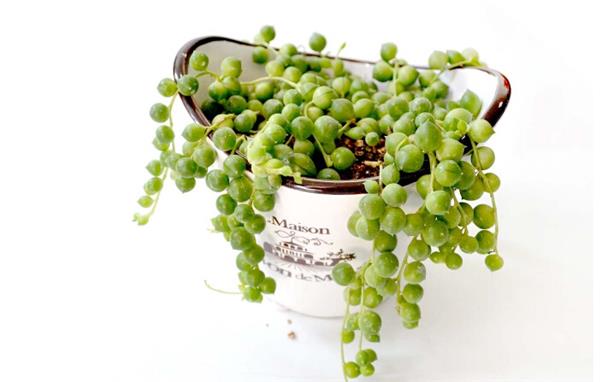
A brief introduction to Buddha beads and orchids
Buddha bead hanging orchid belongs to a kind of hanging orchid, its scientific name is jade bead, there is a very lovely name, called lover's tears, really like broken beads, very lovely. The following will be a detailed introduction to the breeding methods of Cymbidium, so that more and more people begin to pay attention to this plant, and fully grasp all aspects of its information, so that it can grow healthily and contribute to home greening.
The Buddha-bead orchid native to southern Africa has a beautiful shape and is very suitable for ornamental plants. Its growth habit is warm and moist soil, can withstand drought, but not shade, and strong vitality, as long as give it a little water and nutrients, it can thrive. It does not require much light and can grow in strong light as well as in low light. The most suitable temperature for growth is between 15 and 25 degrees Celsius. Dry rather than wet is a key to the cultivation of orchid, too strong light will burn the plant, too weak light will lead to poor growth.
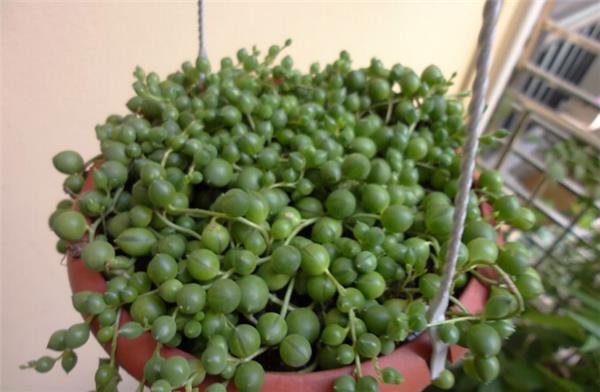
Culture method of Buddha-bead orchid
The culture method of ☆ Buddha bead orchid 1: breeding method
The propagation method of Buddha-bead orchid is mostly cymbidium insertion, which can trim the branches and leaves, each section is 8-10 cm, and then insert it into the basin soil, half-covered, the humidity is controlled between 50% and 60%, and take root in 10 days to half a month, supplemented by careful care in order to survive. At this time, it is most beneficial to plant growth to strictly control the amount of water and keep the pot soil in the state between dry and wet.
Culture method of ☆ Buddha bead orchid: 2: cultivation management
Dry rather than wet is one of the key points in the cultivation of Cymbidium. In addition, it is also extremely important to apply thin fertilizer frequently. The so-called dry rather than wet is because the orchid from southern Africa likes a warm environment and is more drought-resistant than waterlogged, so it would rather be placed in a dry environment than stunted by too much watering. On the other hand, the frequent application of thin fertilizer says that fertilizer should be applied frequently, but each time it is light fertilizer, and one time it can not be fertilized too much, which leads to problems in its growth.
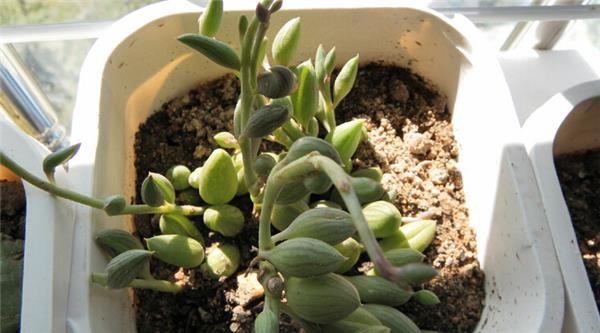
☆ Buddha bead orchid culture method details: 3: pest control
In fact, there are few insect pests in Buddha bead orchids, but this is still the case. Generally speaking, the most common disease of Buddha bead orchid is aphid disease, which occurs in spring. When encountering this kind of phenomenon, it should be killed with 500 times omethoate. And in summer there will be mites, which can be killed 1000 times with triclofenac. When pests, pay attention to increase the humidity of the page, can reduce pests, in addition, ventilation facilities should also be in place.
Buddha bead orchid is cultivated with small basin suspension, very interesting, a round, thick leaves, like a string of wind chimes swaying in the wind, is an ideal flower for family suspension cultivation. So, what is the maintenance method of Buddha bead hanging orchid in the four seasons?
Four seasons maintenance of Buddha beads and orchids:
☆ 1. Because the temperature rises gradually in spring, the plant growth begins to enter the exuberant period, the water evaporation is large, generally should keep irrigating once every 2-3 days.
☆ 2. Cool and ventilated places should be placed in the summer high temperature season to prevent excessive temperature from causing decay and less watering, because the plant at this time is in a semi-dormant state, water evaporation is reduced, and the root absorbs water slowly, otherwise it is easy to rot and die. But it can not be too dry, because the stem of jadeite beads is very thin, if it is not watered for a long time, it is easy to cause leaf flesh shrinkage, nutrient and water transport imbalance, resulting in withered branches, dead branches and difficult to recover. Therefore, to master timely watering, generally choose to water every 4-5 days or so in the evening.
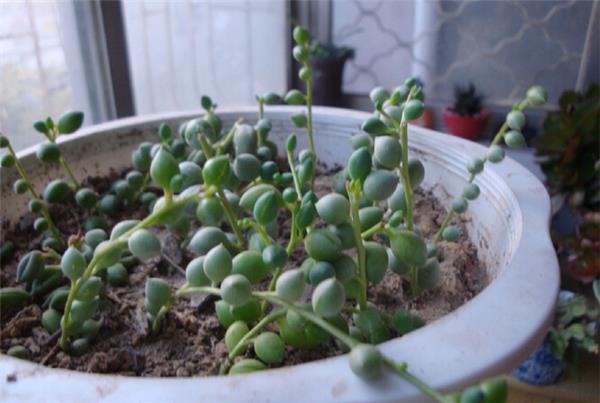
☆ 3, autumn climate is gradually cool, plants have entered the second growth stage, at this time to pay attention to watering, moisturizing, to do not dry do not water. Light should be increased and liquid fertilizer should be applied. Like light, but avoid direct sunlight when it is hot in summer and autumn, and should block 50% of the light.
☆ 4. Winter management should be placed in a sunny place, when the growth enters a stagnant state, the room temperature should be above 0 ℃, and it can be kept free of ice. It is not suitable to water more, but it should not be too dry. Watering should be carried out at noon when there is plenty of sunshine. As the distribution of the root is shallow, you can pad more drainage layer at the bottom of the basin when going up the basin.
The Buddha pearl orchid is what I often call the pearl orchid, which is named because it is composed of a string of bulging, full and green oval leaves. This kind of plant, like green beads, gives people a very lovely feeling, so it is very popular with people. What problems should we pay attention to when raising Buddha beads and orchids?
Matters needing attention in the cultivation of Cymbidium
☆ 1. The leaves are succulent and succulent, so they are resistant to drought. Watering should be dry rather than wet in cultivation, which is one of the keys to success. When the weather is dry, you can spray water to the leaves and vines to make up for the lack of moisture and keep the beads green and full. Prefer semi-shade, sun exposure may burn beads, too weak light will not grow strong.
☆ 2. The root system of the plant is very shallow and can be planted in a shallow pot. Generally use tiles to cover the bottom hole, and cover with a layer of cinder or coarse sand to increase air permeability and filtration, the soil is best to use rotten leaf soil, mixed with a certain amount of sand, the soil-to-sand ratio is about 1:3.
☆ 3. It is warm and humid, cold-resistant and heat-resistant, and the optimum temperature is about 20 ℃ ~ 28 ℃. Both high temperature and low temperature grow slowly, especially when the temperature is more than 30 ℃, it is almost dormant. Less watering and fertilization should be done, otherwise the roots are easy to rot, which is also one of the keys to successful cultivation.
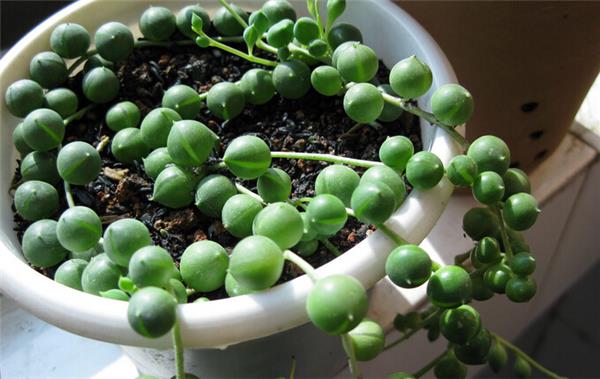
☆ 4. In spring and autumn, when the growth is exuberant, "thin fertilizer" should be applied frequently. Spraying 1-3 ‰ nitrogen fertilizer and potassium dihydrogen phosphate on the leaf surface is beneficial to make the pearl more green and fat and improve the ornamental value.
☆ 5. There are few diseases and insect pests, and aphids are one of them in spring, which can be wiped out or sprayed with 1500 times omethoate in time, while mites in summer and autumn need to be killed with 1000 times dicofol. Pay attention to ventilation and increase leaf humidity, can reduce the infection of mites.
☆ 6. Can be inserted to breed. Branches and vines are easy to take root and can be cut off in spring and autumn. Half of them are buried in sand or loose soil, keeping them moist but without stagnant water, and they will soon take root for planting.

The culture method of the orchid is introduced in detail. according to the above steps, we can make the orchid grow healthily. I hope that after reading this article, you will be able to distinguish all kinds of orchids and understand their growth habits so as to take good care of them and decorate our homes.
The room temperature should be above 0 ℃ and keep it free from freezing. It is not suitable to water more, but it should not be too dry. Watering should be carried out at noon when there is plenty of sunshine. As the distribution of the root is shallow, you can pad more drainage layer at the bottom of the basin when going up the basin.
The Buddha pearl orchid is what I often call the pearl orchid, which is named because it is composed of a string of bulging, full and green oval leaves. This kind of plant, like green beads, gives people a very lovely feeling, so it is very popular with people. What problems should we pay attention to when raising Buddha beads and orchids?
Matters needing attention in the cultivation of Cymbidium
☆ 1. The leaves are succulent and succulent, so they are resistant to drought. Watering should be dry rather than wet in cultivation, which is one of the keys to success. When the weather is dry, you can spray water to the leaves and vines to make up for the lack of moisture and keep the beads green and full. Prefer semi-shade, sun exposure may burn beads, too weak light will not grow strong.
☆ 2. The root system of the plant is very shallow and can be planted in a shallow pot. Generally use tiles to cover the bottom hole, and cover with a layer of cinder or coarse sand to increase air permeability and filtration, the soil is best to use rotten leaf soil, mixed with a certain amount of sand, the soil-to-sand ratio is about 1:3.
☆ 3. It is warm and humid, cold-resistant and heat-resistant, and the optimum temperature is about 20 ℃ ~ 28 ℃. Both high temperature and low temperature grow slowly, especially when the temperature is more than 30 ℃, it is almost dormant. Less watering and fertilization should be done, otherwise the roots are easy to rot, which is also one of the keys to successful cultivation.

☆ 4. In spring and autumn, when the growth is exuberant, "thin fertilizer" should be applied frequently. Spraying 1-3 ‰ nitrogen fertilizer and potassium dihydrogen phosphate on the leaf surface is beneficial to make the pearl more green and fat and improve the ornamental value.
☆ 5. There are few diseases and insect pests, and aphids are one of them in spring, which can be wiped out or sprayed with 1500 times omethoate in time, while mites in summer and autumn need to be killed with 1000 times dicofol. Pay attention to ventilation and increase leaf humidity, can reduce the infection of mites.
☆ 6. Can be inserted to breed. Branches and vines are easy to take root and can be cut off in spring and autumn. Half of them are buried in sand or loose soil, keeping them moist but without stagnant water, and they will soon take root for planting.

The culture method of the orchid is introduced in detail. according to the above steps, we can make the orchid grow healthily. I hope that after reading this article, you will be able to distinguish all kinds of orchids and understand their growth habits so as to take good care of them and decorate our homes.
Related
- Wuhan Hospital Iron Tree Blooming Result Was Instantly Frightened by the Gardener Master
- Which variety of camellia is the most fragrant and best? Which one do you like best?
- What is the small blue coat, the breeding methods and matters needing attention of the succulent plant
- Dormancy time and maintenance management of succulent plants during dormancy
- Minas succulent how to raise, Minas succulent plant pictures
- What are the varieties of winter succulent plants
- How to raise succulent plants in twelve rolls? let's take a look at some experience of breeding twelve rolls.
- Attention should be paid to water control for succulent plants during dormant period (winter and summer)
- Watering experience of twelve rolls of succulent plants
- Techniques for fertilizing succulent plants. An article will let you know how to fertilize succulent plants.



